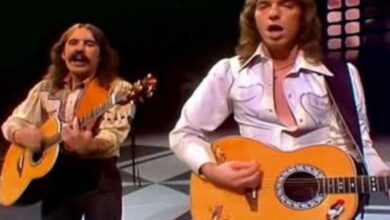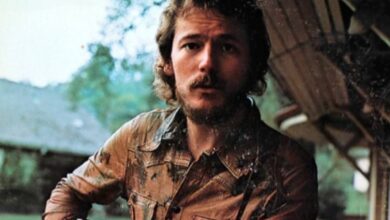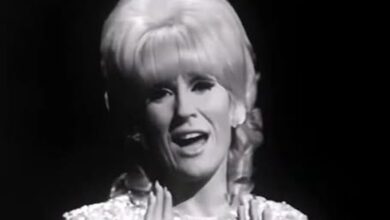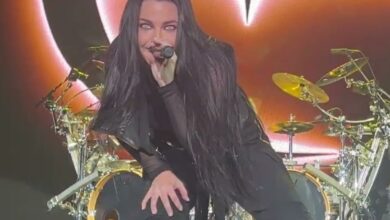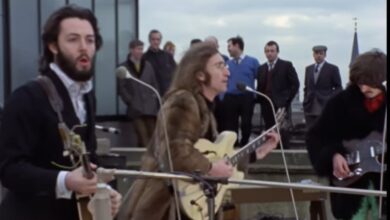Johnny Preston’s “Running Bear” and the Enduring Legacy of a Teenage Tragedy Anthem (1960)
When Johnny Preston released “Running Bear” in 1960, few could have predicted just how deeply this seemingly simple ballad would carve its place in the American pop canon. Blending the drama of a teenage tragedy song with catchy rock and roll elements, “Running Bear” quickly climbed the charts, reaching number one on the Billboard Hot 100. Its blend of storytelling, melody, and a hint of novelty made it both a chart juggernaut and a cultural touchstone, encapsulating an era when the airwaves brimmed with tales of forbidden love and bittersweet endings.
Johnny Preston, born John Preston Courville in Port Arthur, Texas, emerged from the vibrant Gulf Coast music scene. Blessed with a smooth tenor and a wholesome stage presence, Preston caught the attention of the legendary J.P. Richardson, better known as The Big Bopper. While Preston’s early musical efforts included performances with his band, The Shades, it was his collaboration with Richardson that would set his career on an unstoppable trajectory. Preston’s ability to deliver emotionally charged narratives in a pop-friendly style set him apart from his contemporaries, laying the foundation for his breakthrough hit.
The inspiration behind “Running Bear” came directly from The Big Bopper, who wrote the song after being moved by tales of star-crossed lovers separated by fate and circumstance. The narrative, centered on the doomed romance between a Native American boy, Running Bear, and his beloved Little White Dove, was not just a product of pure fiction; it echoed the themes of cultural barriers and youthful longing that resonated strongly in postwar America. Richardson reportedly envisioned the song as a poignant but accessible story, infusing it with both tragedy and a touch of humor in the background vocals.
The recording session for “Running Bear” was nothing short of an all-star affair. Produced by Bill Hall in Houston, the track features background vocals from none other than The Big Bopper himself and rock and roll pioneer George Jones, who provided the memorable “uga-uga” war chants. The production balanced lush harmonies with playful sound effects, while Preston’s lead vocal conveyed both innocence and yearning. The song’s arrangement, with its rollicking rhythm section and atmospheric touches, helped distinguish it from the countless love songs flooding the market at the time.
Upon its release, “Running Bear” was met with immediate enthusiasm from radio DJs and record buyers alike. The single soared to the top of the Billboard Hot 100 and even reached number one in the UK Singles Chart. Its popularity was further cemented by strong sales and heavy airplay, and the track remained on the charts for weeks. The song’s blend of novelty and genuine sentimentality resonated with audiences of all ages, propelling Preston into the national spotlight and establishing “Running Bear” as a fixture on jukeboxes and in living rooms across America.
Culturally, “Running Bear” landed at a moment when teenage tragedy songs—like “Teen Angel” and “Tell Laura I Love Her”—were striking a deep chord with young listeners. Its narrative of doomed lovers from different worlds played into broader themes of societal division and youthful rebellion. Though its portrayal of Native American stereotypes has since sparked debate, at the time it was viewed as a harmless, even sweet, tribute to love’s ability to transcend barriers. The song’s mass appeal helped bridge generational gaps and kept the tradition of narrative-driven pop songs alive.
The success of “Running Bear” gave Johnny Preston the springboard he needed to expand his career beyond Texas. Suddenly, he found himself performing on national television shows and embarking on tours across North America and Europe. The song’s hit status brought him into the orbit of other big names of the era, while its signature style opened doors to a range of musical opportunities. For Preston, “Running Bear” was both a calling card and a creative milestone, cementing his place in the history of early 1960s pop.
“Running Bear” also left a distinct mark on the broader pop and country genres, inspiring a wave of similarly themed songs and serving as a model for artists seeking to blend humor, drama, and novelty. Its format—a narrative-driven ballad punctuated by memorable vocal effects—was imitated by acts eager to capitalize on its commercial success. The song’s storytelling approach foreshadowed the rise of country-pop crossovers in the decades to come, subtly influencing the development of Americana and roots-based music.
Over the years, “Running Bear” has been covered and reimagined by a variety of artists. Notable renditions include versions by Sonny James, who brought a countrified sensibility to the track, and The Guess Who, whose energetic live interpretations paid homage to its enduring charm. Even international acts took a stab at “Running Bear,” underscoring its universal appeal and adaptability across genres and languages.
The release of “Running Bear” came at a turning point in Johnny Preston’s life. The tragic death of The Big Bopper in the 1959 plane crash that also killed Buddy Holly and Ritchie Valens cast a long shadow over the song’s triumph. Preston often credited Richardson’s belief in him as the key to his success, and every performance of “Running Bear” became a quiet tribute to his late mentor. In the wake of this loss, Preston’s rapid rise to fame was tinged with a bittersweet sense of what might have been.
Despite the passing decades, “Running Bear” has never lost its place in the American musical landscape. Its catchy chorus and dramatic storyline ensure continued rotation on oldies stations, while its inclusion on countless compilation albums cements its status as an enduring classic. For many, it remains a touchstone of the era, instantly conjuring memories of sock hops, transistor radios, and a time when love stories set to music could break your heart and make you dance in equal measure.
Beyond its initial impact, “Running Bear” played a role in shaping the future of crossover pop and country recordings. Its blend of narrative songwriting and accessible production techniques would go on to influence artists from Glen Campbell to Kenny Rogers. The emotional directness and narrative sweep of the song can be heard in countless hits that followed, as musicians looked to the past for inspiration while forging new ground.
In the years following its release, Johnny Preston continued to tour and perform, occasionally re-entering the charts with follow-up singles. Though he never quite replicated the runaway success of “Running Bear,” his signature song remained a highlight of every show and earned him invitations to oldies festivals and nostalgia tours. The track’s lasting appeal ensured that Preston’s place in pop history would never fade, even as tastes and trends shifted with the times.
Decades after it first topped the charts, “Running Bear” continues to spark discussion and reflection, both for its musical strengths and its cultural legacy. While its representation of Native American themes is now viewed with a more critical eye, the song’s message of love conquering all remains timeless. Its place in the story of American popular music is secure, reminding listeners of a moment when storytelling, melody, and a bit of tragedy could touch millions.
Ultimately, Johnny Preston’s “Running Bear” stands as more than just a hit single—it’s a snapshot of an era, a heartfelt tribute to the power of narrative, and a lasting testament to the enduring appeal of simple, well-told stories set to unforgettable melodies. Its influence echoes on, both in the careers it launched and the countless listeners it continues to move, generation after generation.
